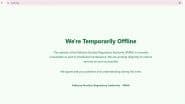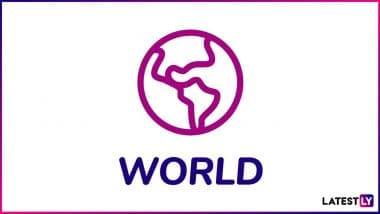Singapore, Jan 21 (PTI) The Chinese-Malay-Indian-Others (CMIO) model should constantly be reviewed to reflect Singapore's increasingly complex multicultural landscape, Edwin Tong, Minister for Culture, Community and Youth, has said.
Speaking at an Institute of Policy Studies (IPS) conference on building stronger communities on Monday, Tong acknowledged the ongoing debate on whether the CMIO categorisation adequately represents Singapore's evolving identity.
The CMIO race model is an administrative tool for the government to manage policies around race. The city state's six million population is predominantly Chinese, about 74 per cent, followed by Malays, Indians and people of other origins.
Responding to questions from the audience, the minister gave an example of someone in a mixed-race marriage.
Also Read | US President Donald Trump Says Will Take Back Panama Canal and Leave Paris Climate Accord (Watch Video).
“If you have a mixed marriage, (and it) is something that strongly identifies you, and to be pigeonholed into a (Chinese, Malay, Indian) or O, I think it doesn't quite do that justice,” Channel News Asia quoted Tong as saying.
“As to whether we should constantly be reviewing it and thinking about it, I think the answer is yes. The answer has to be yes, because it's something that is increasingly prevalent today,” he said.
Still, Tong said the CMIO framework continues to achieve its key objectives, particularly in fostering social mixing through policies such as the Ethnic Integration Policy (EIP) in public housing.
More than 80 per cent of Singaporeans live in state-built high-rise apartment blocks across the land-short island city. Under EIP, racial quotas are set on flat (apartment unit) ownership within public housing blocks and neighbourhoods based on the ethnic make-up of Singapore.
“For the moment, I am not sure there is a better way to achieve the more important outcome, which is intentional social mixing,” he said.
Tong also addressed the integration of naturalised Singaporeans (who get citizenships) with local-born citizens, describing it as an “existential question” for Singapore, considering the nation's low fertility rate.
Singapore's fertility rate fell below 1.0 for the first time in 2023, dipping to a record low of 0.97. The population growth is largely from new citizens, mostly professionals and businessmen working here.
Responding to a question on bridging divides between students from international and local schools, he emphasised that fostering intermixing is critical given Singapore's demographic challenges and reliance on immigration to sustain its workforce.
“And so, the more in which we can integrate local foreigners, the more in which we can integrate naturalised Singaporeans and local-born Singaporeans. And hopefully, over time, we will no longer see this as a gap or as a divide,” Tong said.
While Singapore's immigration policy seeks to maintain the racial proportions of the population, foreign-born Singaporeans may introduce different perspectives that require integration efforts.
“The question becomes sharper when you have practices from where our new citizens come from, and they import practices that we might not be so comfortable with,” he said.
To address this, Singapore has introduced programmes for potential citizens and permanent residents through the People's Association, and the Integration and Naturalisation Champions (INCs).
Companies also run programmes to familiarise newcomers with local norms. But it takes two hands to clap, and local-born Singaporeans have a part to play, Tong said.
There is a growing number of foreigners working in professional positions in Singapore.
“We've also got to see this as a process by which they (foreigners) become more Singaporean in their outlook, their beliefs, in their practices, and also in the way they speak,” he said.
“This is how we find a middle ground to mediate the differences between the two.”
In his speech before the question-and-answer session, Tong stressed the importance of maintaining Singapore's social fabric while allowing diverse views, perspectives and aspirations to have a space to flourish.
“What has worked well for Singapore, since our independence – we must keep and preserve, and not, in the zeitgeist of change, throw out the baby with the bath water,” he said.
Citing examples like the repeal of Section 377A and changes to tudung-wearing policies, Tong said such societal shifts were not made lightly and were the result of extensive consultations.
Tudung is a head-dress worn by Muslim women. While it may not always be possible to find a common ground, the goal should always be “to foster deeper understanding and acceptance, and mediate a position that is acceptable to most”.
“This will help ensure that changes can strengthen rather than fray our social fabric,” he said.
Speaking at the conference panel discussion, National University of Singapore's (NUS) associate professor of sociology, Daniel Goh, said that Singapore's approach to multiculturalism should evolve beyond the CMIO framework.
He also cited the example of the Tripartite Alliance for Fair and Progressive Employment Practices (TAFEP) guidelines, which have shifted away from talking about “multiculturalism in the workplace”, and instead focuses on “diversity in the workplace”.
Singapore needs to "go beyond the politics of representation and recognition", said Goh, who is also associate provost for undergraduate education and vice dean of special programmes at NUS.
Permanent secretary for information and development at the Ministry of Digital Development and Information, Chng Kai Fong, highlighted the growing concerns about misinformation and divisive content on social media.
“We are going to eventually see different platforms espouse different values, and the algorithms themselves would reinforce people who then subscribe to those values,” Chng said, adding that Singapore, as an open society, will be exposed to such influences too.
In overseeing the government's information and communications arm, Chng said his goal is to “reach out to as many people as possible” as part of proactive efforts in the information landscape.
“What we need to do is to be able to update and have this shared social consensus on what we stand for, what our values are,” Chng said.
The government has stressed on maintaining racial harmony though there have been a number cases of racial slurs in public places, according to Singapore observers.
(This is an unedited and auto-generated story from Syndicated News feed, LatestLY Staff may not have modified or edited the content body)













 Quickly
Quickly


















